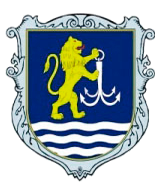CORRESPONDENCE OF THE THEORETICAL MODEL AND THE RESULTS OF TEMPERATURE AND POWER MEASUREMENTS OF THE GRINDING PROCESS
Abstract
Introduction. Surface grinding is an effective method of finishing with a tool that has a discontinuous working surface. The grinding process is accompanied by the grinding of chips with an irrational geometry of abrasive grains. This makes the process energy consuming. The thermal phenomena accompanying the process determine the operational properties of the parts’ surfaces. The works of a number of scientists are devoted to theoretical and experimental studies of the grinding process. The intensity of the change in temperature and power of the grinding process is often explained by heat flows. Different methods of experimental studies of signals of temperature change over time for main grinding methods, and their comparison, prove the pulsed nature of the action of heat sources. Obviously, this cannot be explained by the action of a constant heat flow. A number of parameters of the grinding process are theoretically determined, including: contact dimensions; total processing time, time intervals between the action of adjacent edges; the speed of adding the allowance for both parallel and opposing grinding schemes; the percentage of cutting edges among the total number. Characteristic moments and time intervals corresponding to the beginning, end of the process and achievement of thermal balance are noted. Purpose. The article is devoted to the verification of the correspondence of the theoretical explanations given in the works of the authors, their generalization, and known experimental studies of the temperature and power measurement signals of the circular longitudinal process and other methods of grinding, carried out by foreign scientists for various methods, both with accompanying and opposite kinematics. Results. The conducted analysis and calculations made it possible to prove the correspondence of the proposed theoretical model and experimental data of thermal signals for methods of the grinding process. Conclusions. The power falling on the cutting edge, the energy distribution, which is removed with the chip and enters the part, are found. Estimated power change factors during the passage of the contact area.
Downloads
References
2. Верещака А.С., В.С.Кушнер. Резание материалов : монография. М. : Высшая школа, 2009, 536 с.
3. David A. Stefenson, John S. Agapion. Metal Cutting Theory and Practice. CRC Press New York. 2016. 932 c.
4. Филимонов Л.Н. Высокоскоростное шлифование : монографія. Л. : Mашиностроениe, 1979, 248 с.
5. Криворучко Д.В., Залога В.О., Корбач В.Г. Основи 3D-моделювання процесів механічної обробки методом скінченних елементів : монографія. Суми : СумДУ, 2009, 208 с.
6. Aurich I.C., Biermann A.D., Blum E.H. Modeling and simulation of process machine iteration in grinding. Production Engineering Research and Development, 2009. 3. P. 111–120.
7. Смирнов В.А. Решение тепловой задачи при шлифовании с учетом импульсного характера теплового потока. Известия Томского политехнического университета, 2011. Т. 319. № 2. С. 46–49.
8. Рудик А.В., Пасов Г.В. Залежність параметрів зрізів від режимів при зустрічному та попутному шліфуванні. Вчені записки Таврійського національного університету ім. В.І. Вернадського. Т. 30 (69) № 7, 2019. С. 712.
9. A.V.Rudyk, V. M. Сhupryna, V.A. Rudyk. Effect of shape formation on the accuracy of grinding ends while compensating for machine tool errors/EEJET, № 2/1 (110), 2021, р. 90–97. DOI: 10.155871729-4061.2021226479.
10. Сравнение методов измерения температуры шлифования Khu Khipeng, Stiven Malkin. URL: https://www.km.ru/referats/334607-sravnenie-metodov-izmereniya-temperatury-shlifovaniya
11. PING Bo, FU Yucana, ZHANG Zhiwei and ZHAO Zhengcai. Effect of Grinding Speed on Energy Partition for Grinding of Inconel 718 with Vitrified CBN Wheels. Advances in Materials Manufacturing Science and Technology XV, Materials Science Forum. Vol. 770. Р. 263–270.





